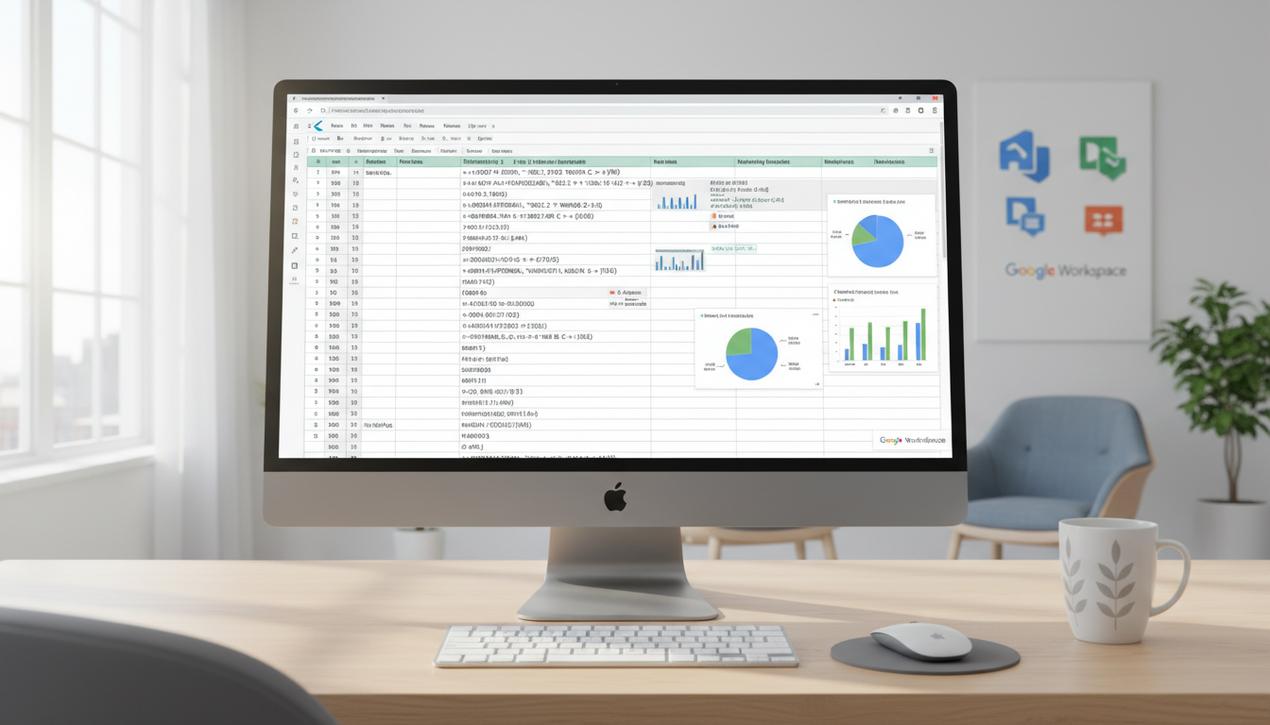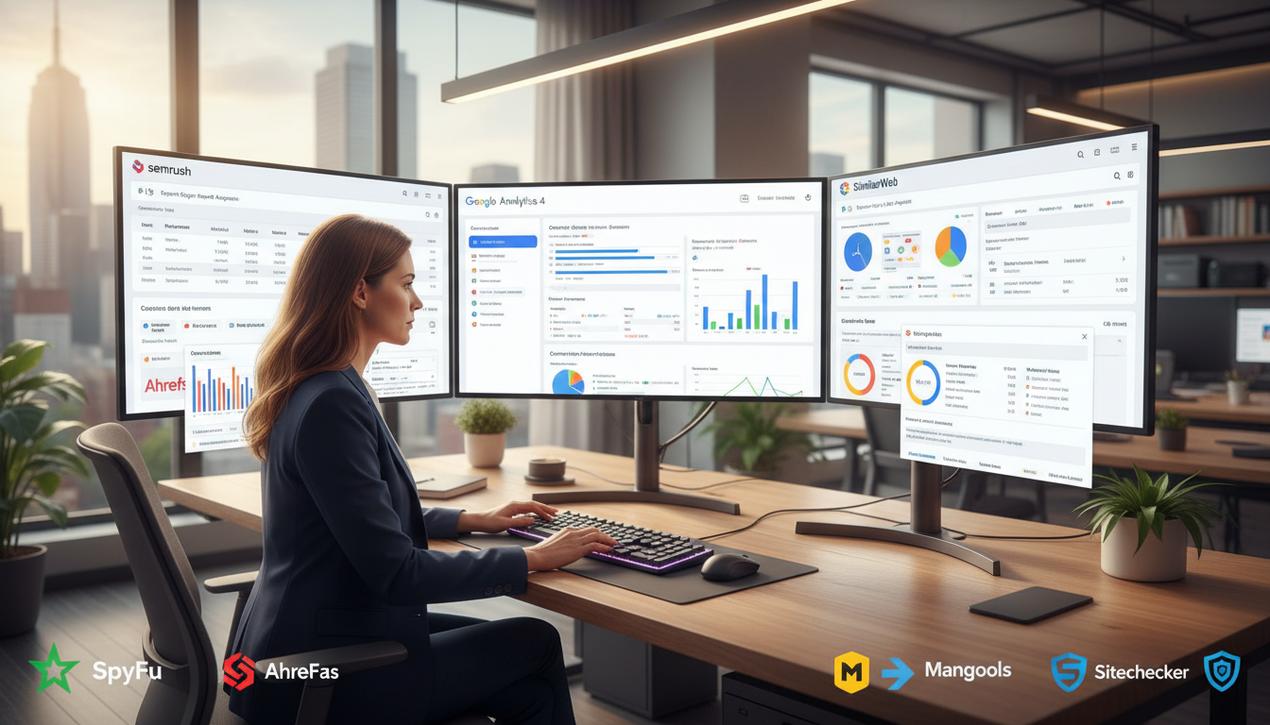A Complete Guide to Mastering Google Sheets in 2025


In a professional world where data reigns supreme, mastering a spreadsheet application has become a non-negotiable skill. While Microsoft Excel long dominated the market, Google Sheets has established itself as an essential alternative, particularly due to its collaborative nature and seamless integration with the Google Workspace ecosystem. In 2025, over 3 billion users rely on Google Workspace, and Sheets is at the heart of their daily operations for project tracking, data analysis, and budget management. However, many users only scratch the surface of its capabilities. Far from being a simple online clone of Excel, Google Sheets is a powerhouse tool equipped with unique features, built-in artificial intelligence, and formidable flexibility. This guide offers a comprehensive walkthrough to move beyond the basics and use Google Sheets like a true professional, transforming your spreadsheets into powerful tools for analysis and automation.
Essential Foundations for Maximum Productivity
Before diving into complex functions, it’s crucial to master the features that will save you time daily. Proper organization and efficient data manipulation are the cornerstones of a clean and usable spreadsheet.
Quickly Clean and Format Text
Imported data is often poorly formatted. Google Sheets offers simple functions to harmonize your text in the blink of an eye.
- =UPPER(): Converts all text in a cell to uppercase.
- =LOWER(): Converts all text in a cell to lowercase.
- =PROPER(): Capitalizes the first letter of each word, ideal for proper nouns.
- =TRIM(): Removes leading and trailing spaces from a text string, an essential function for cleaning data before analysis.
Using these formulas in an adjacent column allows you to clean thousands of rows in seconds, a task that would take hours manually.
Protect Cells and Data Ranges
The main advantage of Google Sheets is collaboration. But collaboration also means the risk of human error. To protect your formulas or source data, range protection is indispensable. By selecting a range of cells and then going to Data > Protect sheets and ranges, you can set specific permissions. You can choose to allow only yourself to edit an area, or simply display a warning if someone else tries to modify it. This is a fundamental security practice for any shared document.
Automation to Supercharge Your Efficiency
The true power of Google Sheets is revealed in its ability to automate repetitive tasks. Forget manual copy-pasting and let the spreadsheet work for you.
The QUERY Function: Your Personal Database
The =QUERY() function is arguably the most powerful and underestimated feature in Google Sheets. It allows you to use a query language (similar to SQL) to filter, sort, and aggregate data dynamically. Its basic syntax is `=QUERY(range, “query”)`.
Imagine you have a sales table with “Date,” “Product,” “Region,” and “Amount” columns. With QUERY, you can:
- Extract specific data: `=QUERY(A1:D1000, “SELECT * WHERE C = ‘West'”)` to display all sales from the West region.
- Calculate aggregates: `=QUERY(A1:D1000, “SELECT B, SUM(D) GROUP BY B”)` to get the total sales by product.
- Sort and limit results: `=QUERY(A1:D1000, “SELECT * ORDER BY D DESC LIMIT 10”)` to display the top 10 best sales.
Mastering QUERY transforms your spreadsheet into an interactive and dynamic database, capable of generating complex reports that update in real-time.
The Incredible ARRAYFORMULA
Tired of dragging your formulas down hundreds of rows? The =ARRAYFORMULA() function applies a formula to an entire range of cells. For example, instead of writing `=A2*B2` in cell C2 and then dragging it down, you can write in C2: `=ARRAYFORMULA(A2:A100 * B2:B100)`. The formula will automatically apply to the entire column, and any new row added within the range will be calculated automatically.
Record Macros for Recurring Tasks
For actions that cannot be handled by formulas, such as specific formatting or multi-step cleaning processes, Google Sheets allows you to record macros. Go to Extensions > Macros > Record macro. Perform your series of actions once, give your macro a name, and you can replay it endlessly with a single click or a keyboard shortcut.
Advanced Data Visualization and Analysis
Once your data is clean and organized, it’s time to make it talk. Google Sheets offers visualization tools that are far more advanced than they appear.
Create Dynamic Charts and Dashboards
The AI-powered “Explore” assistant is excellent for a quick initial analysis. It automatically suggests relevant charts based on your data. But for full control, the chart editor allows you to customize every aspect of your visualization. By combining charts with filters (via “Slicers”) and the QUERY function, you can build true interactive dashboards that allow for intuitive data navigation.
Sparklines for In-Cell Mini-Charts
The =SPARKLINE() function allows you to insert a small chart directly inside a cell. This is extremely useful for quickly visualizing a trend without creating a full chart. For example, `=SPARKLINE(A1:L1)` can display a mini-line chart of sales trends over 12 months next to the annual total. It’s a visual and compact way to enrich your tables.
Conditional Formatting to Highlight Information
Don’t just color cells manually. Conditional formatting (in Format > Conditional formatting) applies style rules automatically. You can highlight values above a certain threshold, create color scales to visualize hot and cold spots, or even highlight entire rows based on the value of a single cell (e.g., color an entire task row red if its status is “Overdue”).
Connecting Google Sheets to the World
One of the greatest advantages of Sheets is its ability to import data from other sources, whether from other spreadsheets or directly from the web.
Import Data from Other Sheets with IMPORTRANGE
The =IMPORTRANGE(“spreadsheet_URL”, “sheet_name!range”) function is essential for working across multiple documents. It allows you to import a range of data from another Google Sheets spreadsheet in real-time. Any changes in the source sheet are instantly reflected in the destination sheet. This is the perfect solution for centralizing information from different teams’ files into a master dashboard.
Translate Text with GOOGLETRANSLATE
Need to quickly translate a list of terms? The =GOOGLETRANSLATE(text, “source_language”, “target_language”) function integrates Google Translate directly into your sheet. For example, `=GOOGLETRANSLATE(A2, “en”, “fr”)` will translate the content of cell A2 from English to French. You can even use “auto” as the source language for automatic detection.
Import Data from Websites
For more advanced users, the =IMPORTHTML() and =IMPORTXML() functions are revolutionary. They allow you to extract structured data directly from a webpage. `=IMPORTHTML()` is ideal for importing tables or lists. `=IMPORTXML()` is more complex but allows, using XPath expressions, to extract any element from a webpage, such as a product price, an article title, or stock market data.
By mastering these tips, Google Sheets transforms from a simple spreadsheet into a powerful command center for your data. From automating repetitive tasks with macros and the QUERY function to creating interactive dashboards and importing external data, the possibilities are nearly endless. The secret is to adopt a continuous learning approach, regularly exploring the new features that Google deploys. By investing a little time to go beyond the basic functions, you will multiply your productivity and your ability to turn raw data into strategic insights.



